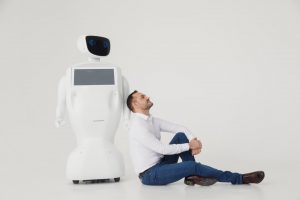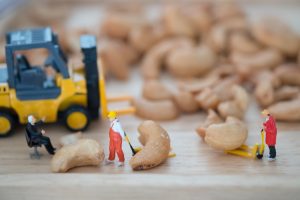10 Opportunities for Industry 4.0 PPC

The topic of Industry 4.0 is probably the most recurring theme in manufacturing company today. The concept, which is so significant that it is even classified as a new industrial revolution, presupposes a smart factory where machines and systems are fully connected. In this article, we will discuss how PPC Product-Product-Care) can adapt and evolve to exploit the opportunities generated by the evolution of manufacturing in the context of Industry 4.0.

1. Autonomous programming and ideally artificial intelligence , all programming rules and criteria are already previously defined so that programming can be done completely autonomously. The programmer's interference must be minimal, preferably to be justified and compared to the previous automatic scenario to approve. If there are exceptional criteria that must be considered, they must be informed from system parameterizations but avoiding manual interference. If programming system rules do not consider all major variables, it is an indication that these rules need to be improved or the system needs to be reviewed. In an autonomous programming, every short time, the system is updated with the new orders and notes and reprogramming to the factory, keeping the team informed from smart notifications when everything is within the expected boundaries or sending alerts to the programmer. Thus, it is possible to make available the equivalent of a 24 -hour PCP and ensure the always balanced and updated programming for the factory.

2. TOTAL CONTROL OVER RESOURCES In Industry 4.0's PPC, it's not just the capacity of specific machines that is controlled and managed. On the contrary, all finite resources must be known and managed, including operators and tools. The labor required to perform each operation must consider the variations of each type of product and machine. Operators must be defined according to their multi-functionality across different sectors. Detailed labor availability must be considered, in some cases even mes with the HR system and time clock. In this way, the PPC can guide the factory in allocating the necessary labor according to the schedule, considering all the actual characteristics and limitations of the process.
3. Factory without paper

In an Industry 4.0 factory, there's no longer room for paper. Programming schedules must be sent to the factory digitally. It's no longer acceptable to print resource allocation or a sequencing report and hand the paperwork to production supervisors. Instead, schedules should be automatically released on airport-style screens or, when possible, sent to each machine's own terminal, centralizing the input and programming interface in the mesenvironment. This way, changes can be made much more quickly, as there's no need to retrieve old versions and reprint the schedule whenever a change occurs.

4. PROGRAM-DRIVEN MOVEMENT In the PPC of the future, not only is machine sequencing performed, but movement is also considered and even mes by the production scheduling system. Scheduling criteria should already consider the physical location of resources and allocate machines to minimize cross-flow or unnecessary movements between distant upstream and downstream resources. Furthermore, the available schedule can guide movement, informing the next resource to which the material should be sent after production. In some cases, the AGV movement route itself can be defined based on the detailed schedule.
5.

The PPC Production Planning and Control) of the future does not work in isolation. Interfaces with the main areas of the company are fundamental to achieving better performance. In this sense, an agile flow of information between PPC and Maintenance is essential. Ideally, when an operator registers a maintenance request for a specific piece of equipment, PPC should immediately receive this signal and, depending on the type of problem (based on the repair time history), redistribute orders and rebalance the schedule using alternative resources to try to minimize the impact.

6. Machine Learning to identify patterns in the context of the connected factory, preference rules settings are no longer arbitrated or defined only by people's experience, but must be calculated based on machine learning algorithms so that the system learns to identify productivity gains patterns as it is more and more used. For example, from the first orders produced from a new product, the system can identify that production efficiency in some machines is much better than in others, and prioritizing the allocation of upcoming orders in the resources they have best performed in the recent past. Thus, the programming will be sent considering the machines with better performance for certain products (or molds, for example), without depending on the experience of people and a priority register that can quickly become obsolete.
7.

The key indicator of the factory of the future is schedule adherence. Instead of controlling production by units produced, which generates distortions due to mix variations or undesirable priority behaviors, the factory's main function becomes executing the entire schedule with the least possible variation, given that the PPC has already taken into account all the main variables and operational constraints to ensure a feasible schedule that is aligned with production strategies.

8. AGILE REPROGRAMMING It's not just Production Scheduling that must be agile, but Rescheduling as well. In PPC , the planning system must be connected, reading data from machine sensors, so that any performance variations can be quickly updated and eventually recalculated. If there are issues with scrap, operator shortages, or unexpected raw material unavailability, the PPC can quickly update itself digitally and reschedule the factory quickly, trying to generate the least impact.

9. REAL-TIME DELIVERY PROMISES MES mes process is also connected to the factory. Based on a real-time consultation of the detailed production schedule, delivery times for new orders are determined taking into account detailed product routings and projected input availability. Mes for new product launches not yet registered in the ERP, simulation can be performed based on analogy with similar products or integration with the routing and structure of the PLM (Product Lifecycle Management) system.

10. Advanced Planning of Scenarios are not only the production programming processes of production that can enhance and benefit from the advent of industry 4.0. Long -term medium planning can also and should be inserted in this contact. In this context, decision making is fully based on advanced scenarios, generating condensed and management information from thoroughly calculated data. S&P processes now consider the detailed capacity and real availability of all factory resources. It is no longer necessary to be limited to only 1 plan per month, at any time the system can connect the actual entry and updated factory situation to repress scenarios and write the directions throughout the month, all decisions are quantified and presented with financial integration for executive scenario analysis.
These opportunities are part of PPC , but many of them are already realities for NEO clients. If you'd like to explore these opportunities further in your industry, contact us and take the next step in this industrial revolution mes
[NOPTIN-Form ID = 2822]

